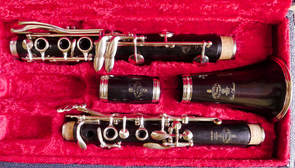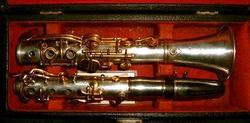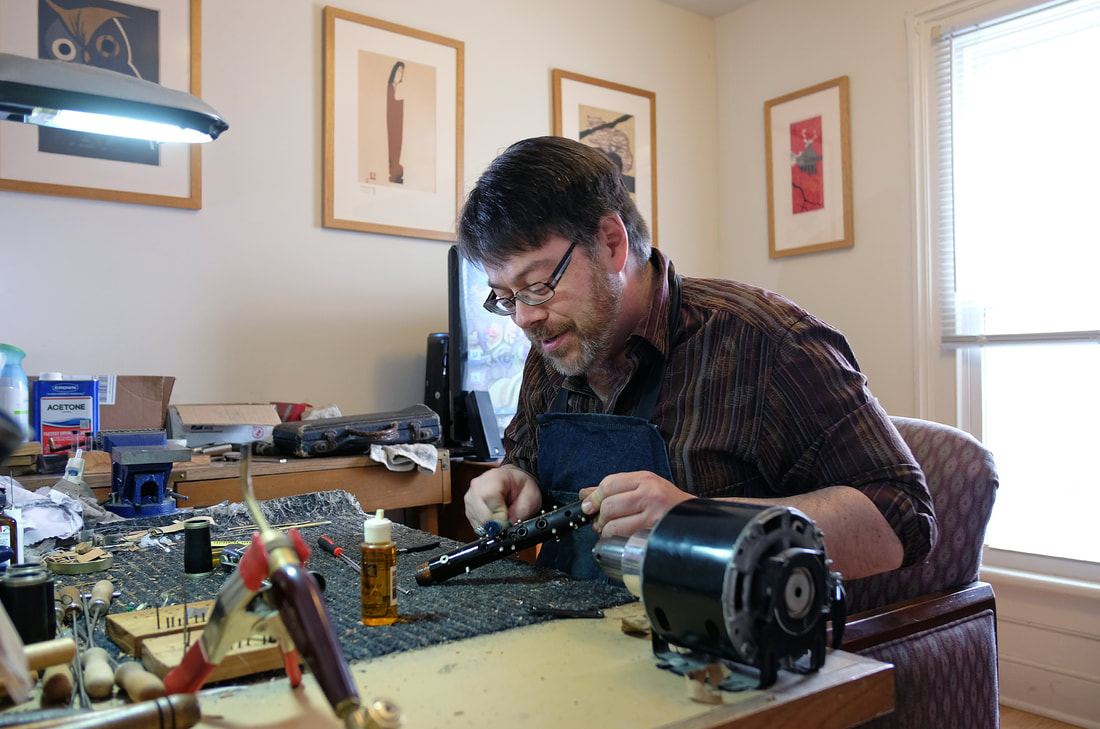 I buy most of my horns on eBay and have learned, through long and expensive experience, to examine every instrument with a fine toothed comb before purchasing! I've received cracked clarinets, plastic instead of wood clarinets, broken clarinets, clarinets with damaged or missing keys or rings, and even a clarinet that was made of pieces of 3 different clarinets! So, based on my experience and some of the customer horns I've been seeing lately (also purchased on eBay) I'd say its time for an eBay buying tutorial! First, I'd restrict my buying to the US and Canada unless you are fluent in another language and can afford to risk the high shipping. Mistakes can happen with overseas communication, and it can be much harder and more expensive to force a return if things aren't as represented! Second, look at feedback: while feedback can't tell you everything (with one negative, ebay's current policy of basing it on only the last year's transactions can make a small seller look worse than he/she is) it is a good place to start. Numerous negatives/ neutrals and unflattering comments about misrepresented condition, poor communication, and high shipping can be a tip off that you aren't dealing with someone who is professional or honest - best to move on; lots of fish in the sea... Third, what does the ad show and tell you? Is it full of sharp pictures and copious details or a few badly taken pictures and a very skimpy description posted from a mobile phone? Is the person obviously knowledgeable and informative about the instrument, or just a garage sale picker looking for a quick sale at the highest price? To be continued....
0 Comments
 One of the clarinet makers I've watched for for years is Thibouville Freres, a French company that seems to date from the 40's - 60's (based on case, design elements, etc). These restore to be some truly fine playing horns, with nice design features and a slightly larger than standard bore. I've sold them to Jazz players, Klezmer players and others of uncertain affiliation, always with happy results! The nicest one I've ever seen was an 'Artist' model that I bought from Goodwill for about 75 dollars! It was a large bore pro horn with all tenons metal lined, a metal lined barrel, and 7 rings. After a full overhaul, it was a wonderful player with a fat, Selmer-like 'vintage' tone and good intonation, ideal for Jazz or Classical, depending on choice of mouthpiece. The 'Concert' and 'Supreme' models are also excellent. Thibouville Freres also made nice bass clarinets (under their own name and as stencils, I believe), and was responsible for building some or all of the McIntyre system instruments that I've seen. They also made instruments in the 60's (as best I can determine) with the M. Masson name as well as Thibouville on the sections. I think they were more of a student level horn, based on the couple I've overhauled, but still decent players if well set up... I do notice, BTW, that mouthpiece choice seems to be a factor: a customer of mine who had purchased one last year (and reported being unimpressed) called me recently, raving about its tone and playability with a change of mouthpiece. Maybe that made all the difference, or maybe he's been practicing more, who knows ? Does anyone else have experience to report with this company's instruments and any idea why they aren't a whole lot more famous?  This idea for a post came from a customer question: 'how can I tell the difference between LP and HP clarinets?" Its a damn good question! For those of you who aren't familiar with the terms, LP stands for Low Pitch (A=440) and HP for High Pitch (approx. A=456). The latter was a pitch system in use in Europe in the late 19th/early 20th cen, and crossed the ocean with emigres bearing clarinets. Thankfully, it died out in the 30's, as the two systems are about a quarter tone apart and little or nothing can be done, (with longer barrels, etc.), to reconcile the two! You'll see these poor beasties on eBay with some frequency and they always have a lonely, under-appreciated look to them, generally selling for $30 or $40 to someone who didn't ask for markings or measurements and thinks they're getting a hell of a deal! Well, they are, after a fashion: I've had a couple show up here and had to sit the owners down, with a box of Kleenex, and explain the harsh realities of multiple pitch systems to them. The sad thing is that identification is not difficult! In the 1920's, with LP ascendant and HP on the way out, most instruments were marked one or the other on the main body sections. Before that, especially with European made instruments, you have to depend on measurements. A modern Bb clarinet is 23 1/4" assembled, without the mouthpiece. I've seen older examples that varied from 23 to 23 1/2", but nothing longer or shorter than that. By the time you're down to 22 7/8 or a bit less, you're looking at a Bb HP. Shun it! Run away! It will make a wonderful lamp or doorstop, but its days as a musical instrument are sadly past, unless you like playing clarinet by yourself... On my Blogspot page, I have provided a chart of lengths for HP and LP clarinets in all the common keys (and a couple rare ones). The URL is http://vintageclarinetdoctor.blogspot.com/p/blog-page_14.html , if you'd like to check it out.... |
Archives
February 2024
AuthorThe Licorice Shtick Blog is the creation of the Vintage Clarinet Doctor, a Winston Salem, NC based woodwind instrument repair shop specializing in vintage and antique clarinets, saxophones, and the occasional flute. Categories |

 RSS Feed
RSS Feed